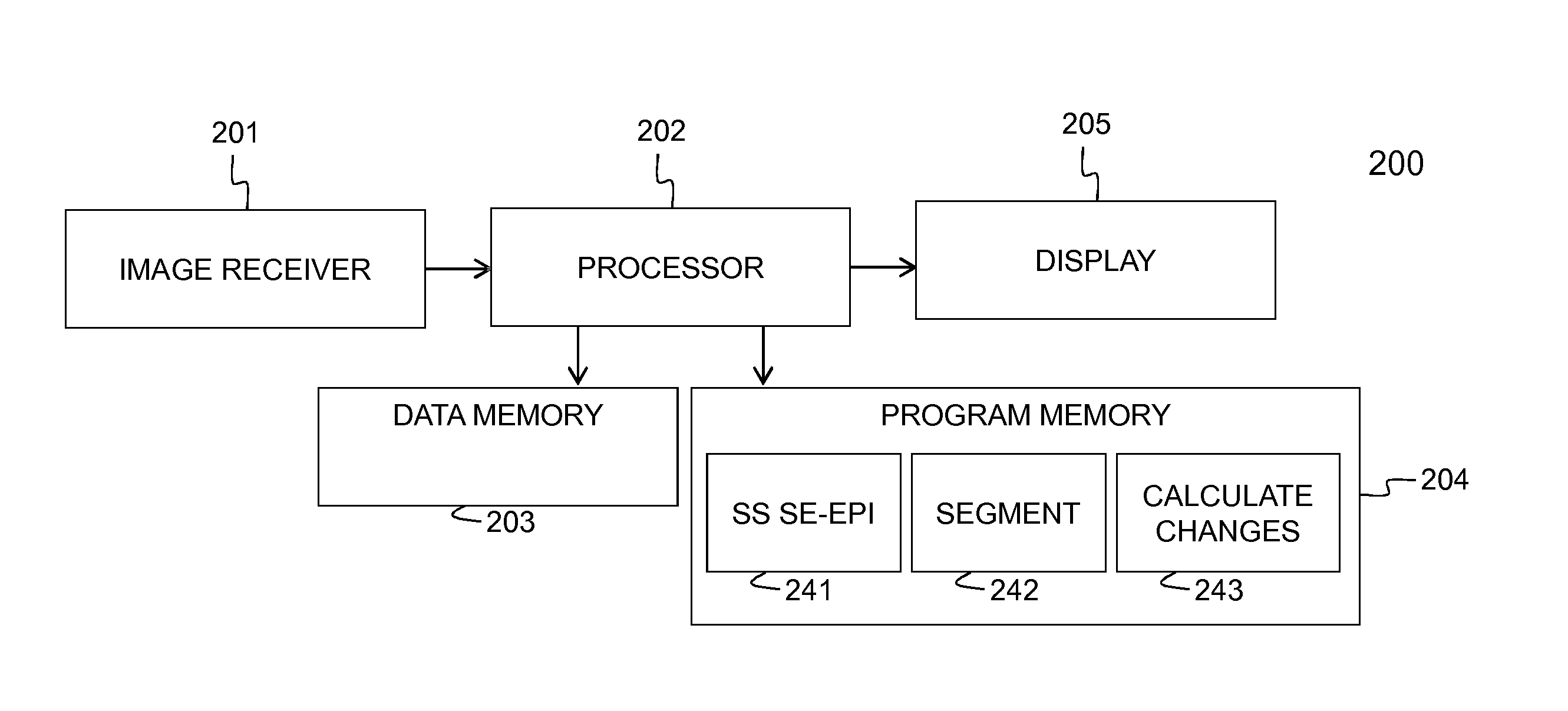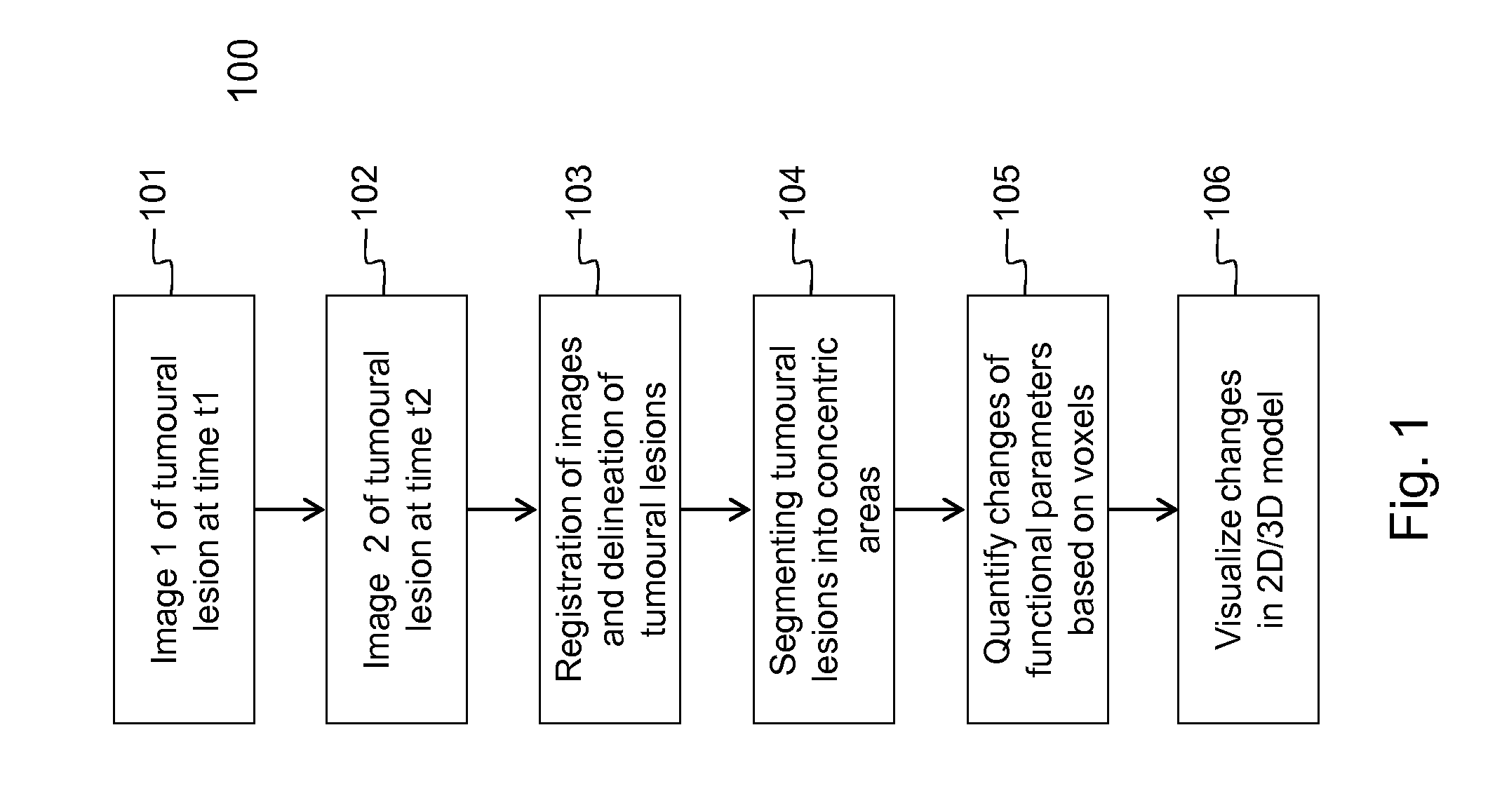Method and device for evaluating evolution of tumoural lesions
a tumour and evolution technology, applied in the field of methods and devices for evaluating the evolution of tumours, can solve the problems of losing residual hot spots, affecting so as to improve the prognosis of patients, reduce side effects, and shorten the hospital stay
- Summary
- Abstract
- Description
- Claims
- Application Information
AI Technical Summary
Benefits of technology
Problems solved by technology
Method used
Image
Examples
Embodiment Construction
)
[0104]Embodiments of the method 100 and device 200 for evaluating the evolution of tumour lesions over a period of time t1-t2 are illustrated respectively by FIG. 1 and FIG. 2.In step 101, a first image taken at time t1 is received via the interface 201, e.g. a network connection or connection to an MRI scanner. Similarly, in step 102, a second image taken at time t2, is received via the interface 201. The images are temporarily stored in data memory 203 for being processed by processor 202. In the images, the tumour lesions are delineated using the SS SE-EPI algorithm. The delineation followed by registration of the images, i.e. step 103 in FIG. 1, is executed by the processor 202 that is software controlled. The SS SE-EPI algorithm 241 may be one out of several delineation algorithms that is available in the program memory 204 of the device 200 according to the invention. The delineation of tumour lesions may be fully automated, i.e. the algorithm also detects the tumour lesions ...
PUM
 Login to View More
Login to View More Abstract
Description
Claims
Application Information
 Login to View More
Login to View More - R&D
- Intellectual Property
- Life Sciences
- Materials
- Tech Scout
- Unparalleled Data Quality
- Higher Quality Content
- 60% Fewer Hallucinations
Browse by: Latest US Patents, China's latest patents, Technical Efficacy Thesaurus, Application Domain, Technology Topic, Popular Technical Reports.
© 2025 PatSnap. All rights reserved.Legal|Privacy policy|Modern Slavery Act Transparency Statement|Sitemap|About US| Contact US: help@patsnap.com



